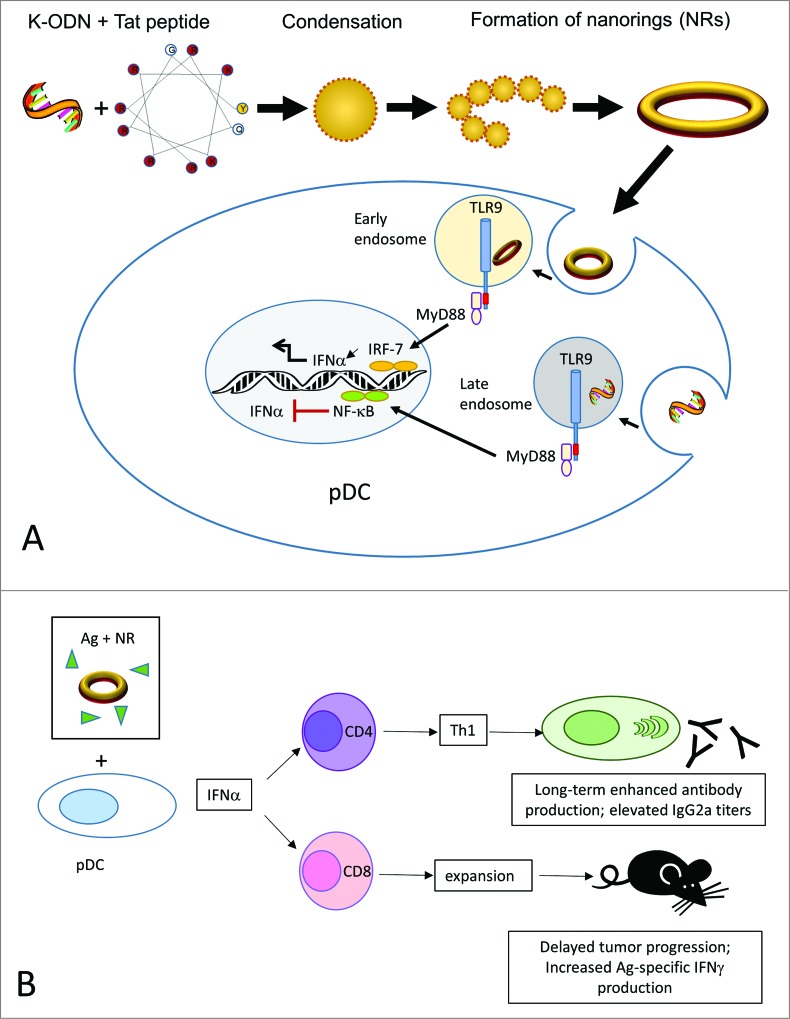Figure 1.
Assembly and mechanism of action of CpG ODN/Tat nanorings. (A). The cationic peptide condenses K-type CpG ODN into rigid individual building blocks that re-organize to form nanoring structures. Nanorings are internalized by pDC and translocate to early endosomes where they initiate a TLR9-MyD88-IRF7-mediated signaling pathway, leading to IFNα production. In free form, K-ODN localize to late endosomes, and are not qualified to trigger an interferon response. (B). Nanoring-stimulated pDCs secrete Type I interferons, supporting antigen-specific humoral and cellular immunity in vivo. Ag, antigen; CpG ODN, cytosine-guanine oligodeoxynucleotides; IFNα, interferon α; IFNγ, interferon γ; pDC, plasmacytoid dendritic cells; Tat, 8 residue charged HIV-derived peptide Tat(47–57); Th1, T helper type 1; TLR9, Toll-like receptor 9.

